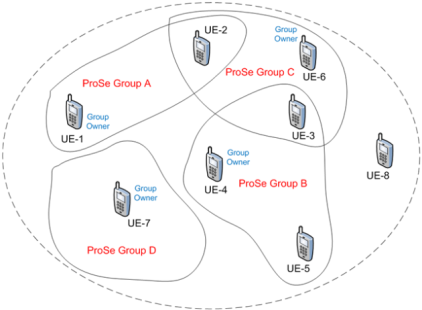 DSL and LTE bonding is a technology that have been hovering under the radar, not receiving the attention it deserves. A few operators have been experimenting with it, and some deployed it. Vodafone targets the solution at the enterprise sector, while Deutsch Telekom sees it as complementary service in rural areas. DSL/LTE bonding combines a DSL modem with a LTE UE modem at the user side along with integration in the core network to allow supplementing the service of one technology where the other falls short. It reduces bottlenecks in performance so for example when xDSL service slows to a crawl it taps the capacity of LTE. Having two separate links to the Internet creates redundancy of service and consequently increases reliability and quality of service. DSL/LTE bonding is a great technology, but I wonder if it can extend further to provide for additional applications. Specifically, can it be used as a platform for future device-to-device (D2D) communication?
DSL and LTE bonding is a technology that have been hovering under the radar, not receiving the attention it deserves. A few operators have been experimenting with it, and some deployed it. Vodafone targets the solution at the enterprise sector, while Deutsch Telekom sees it as complementary service in rural areas. DSL/LTE bonding combines a DSL modem with a LTE UE modem at the user side along with integration in the core network to allow supplementing the service of one technology where the other falls short. It reduces bottlenecks in performance so for example when xDSL service slows to a crawl it taps the capacity of LTE. Having two separate links to the Internet creates redundancy of service and consequently increases reliability and quality of service. DSL/LTE bonding is a great technology, but I wonder if it can extend further to provide for additional applications. Specifically, can it be used as a platform for future device-to-device (D2D) communication?
Having devices communicate with each other directly instead of a direct link to a base station is an old concept that is required in a few applications such as military and public safety networks as part of what’s called mobile ad hoc networks (MANETs). In LTE, the presence of the base station as anchor point to provide important services like synchronization, routing and resource allocation simplifies the implementation of MANETs significantly. D2D is being defined in LTE release 12, with the initial focus is on providing proximity services (ProSe) under the umbrella of LTE Direct* and in public safety applications. D2D is also being discussed in 5G circles such as in the EU project on 5G architecture METIS.
D2D can be a challenging technology concept with many tradeoffs to manage. Examples include authentication, power management, delay, throughput performance, and interference management. Going a layer deeper we are confronted by more important questions such as the type of physical layer (in LTE a UE receives OFDM and transmits SC-FDMA, so how would a D2D devices function?) and how to implement a D2D modem – for example, a software-defined radio that’s capable of multimode operation.
Going back to our DSL modem, it is a hardware platform that can integrate LTE UE function and can leverage the DSL to provide some of the control functions. This has the potential to make it lower cost than a typical small cell that integrates base station silicon, especially if D2D modems can leverage the UE silicon economies of scale. It can serve a few connected subscribers where perhaps it can be a fit for the low-end of the market: in the home and the small office.
The feasibility of such an implementation is within the possible, while the details need to be specified. It makes for an interesting possibility to provide range extension. So, what are your thoughts on D2D in LTE and its future evolution? Send me your thoughts and let me know what challenges you see.
* LTE-Direct is a distributed approach to proximity services that provides an interesting approach to extend the capabilities of beacons by leveraging the long range capabilities of LTE (Apple iBeacon is based on Bluetooth with shorter range; many users turn Bluetooth off). It also provides wider range of services than beacons by allowing messages to be exchanged between individuals and groups without the need for management in the cloud. Facebook and Yahoo are reputed to have signed up to develop apps using LTE-Direct which is reportedly to hit the market end of 2015.

